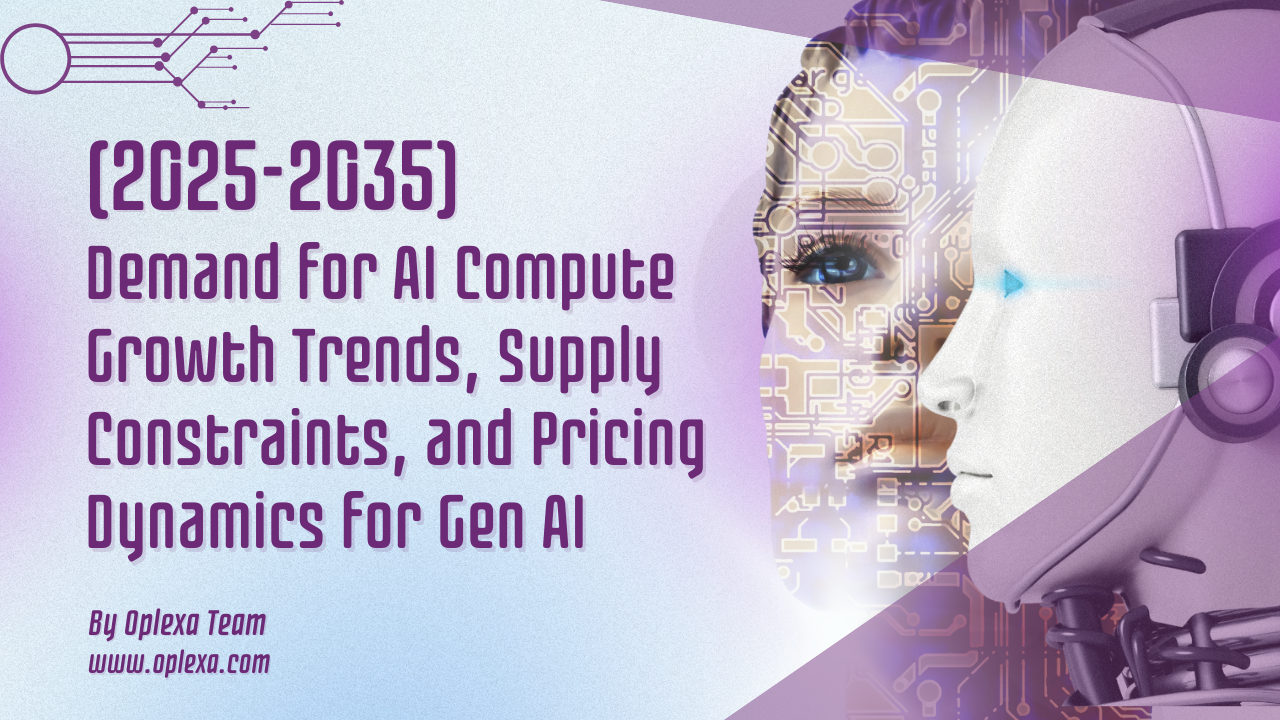1. Executive Summary: The Growing Demand for AI Compute
-
- Key insights on the demand for Gen AI compute
- Growth projections for AI compute in the next decade
- Overview of supply and pricing challenges
2. Introduction to AI Compute Demand
-
- Defining AI compute and its importance for Gen AI
- Key industries and applications driving AI compute demand
- Overview of AI compute infrastructure requirements
3. Growth in Gen AI Demand (2025-2035)
-
- Projected growth rate of Gen AI demand globally
- Key sectors driving Gen AI compute needs (healthcare, finance, autonomous vehicles, etc.)
- Adoption of AI by enterprises, startups, and governments
4. Supply Constraints Impacting AI Compute
-
- Semiconductor shortages and their impact on AI compute availability
- Bottlenecks in manufacturing and supply chain issues
- Geopolitical factors affecting semiconductor supply (U.S.-China trade tensions)
- Labor, raw material, and production challenges in semiconductor fabs
5. Trends in Logic Semiconductors for AI Compute
-
- Shifts in demand for high-performance logic semiconductors (GPUs, TPUs, AI ASICs)
- Advancements in semiconductor nodes (3nm, 5nm) and their influence on AI compute power
- Increasing power consumption and energy efficiency requirements for AI hardware
6. AI Compute Pricing Trends
-
- Historical and projected pricing trends for AI compute hardware (GPUs, TPUs)
- Pricing dynamics based on supply-demand imbalances
- Impact of innovations like chiplet architecture and 3D stacking on AI compute costs
- Pricing comparisons between custom AI silicon and off-the-shelf solutions
7. Impact of Supply Chain and Semiconductor Availability on AI Compute Demand
-
- How limited supply impacts project timelines for AI deployments
- Strategies enterprises use to mitigate supply risks (multi-sourcing, pre-purchasing, cloud adoption)
- Role of cloud providers in addressing AI compute supply challenges
8. Competitive Landscape for AI Compute Providers
-
- Major players in AI compute hardware (NVIDIA, AMD, Intel, Broadcom, Google TPUs, etc.)
- Custom silicon strategies by hyperscalers (Amazon, Google, Microsoft)
- Impact of new entrants and smaller players in the AI hardware market
- Ecosystem partnerships and collaborations to meet AI compute demand
9. Future Outlook: AI Compute Market
-
- Emerging technologies to watch: quantum computing, neuromorphic chips
- Long-term AI compute trends (distributed AI, edge AI, federated learning)
- Regulatory considerations and global cooperation on AI compute infrastructure
- Investment opportunities and market growth forecasts for AI compute
10. Strategic Recommendations for Stakeholders
-
- Key considerations for enterprises when planning AI compute investments
- How semiconductor manufacturers can mitigate supply constraints
- Strategic actions for investors in the AI compute ecosystem
11. Conclusion
-
- Summary of findings on AI compute demand and supply constraints
- Long-term strategic implications for the industry
12. Appendices
-
- Detailed market data and forecasts on AI compute demand
- List of major AI compute hardware innovations and product launches
- Additional references on AI compute and semiconductor industry trend
#AICompute #GenerativeAI #AIInfrastructure #SemiconductorShortage #AIHardware #GPUs #TPUs #AIASICs #SemiconductorSupplyChain #AIComputePricing #HighPerformanceComputing #AIComputeDemand #AIinHealthcare #AIinFinance #AutonomousVehicles #AIandSemiconductors





